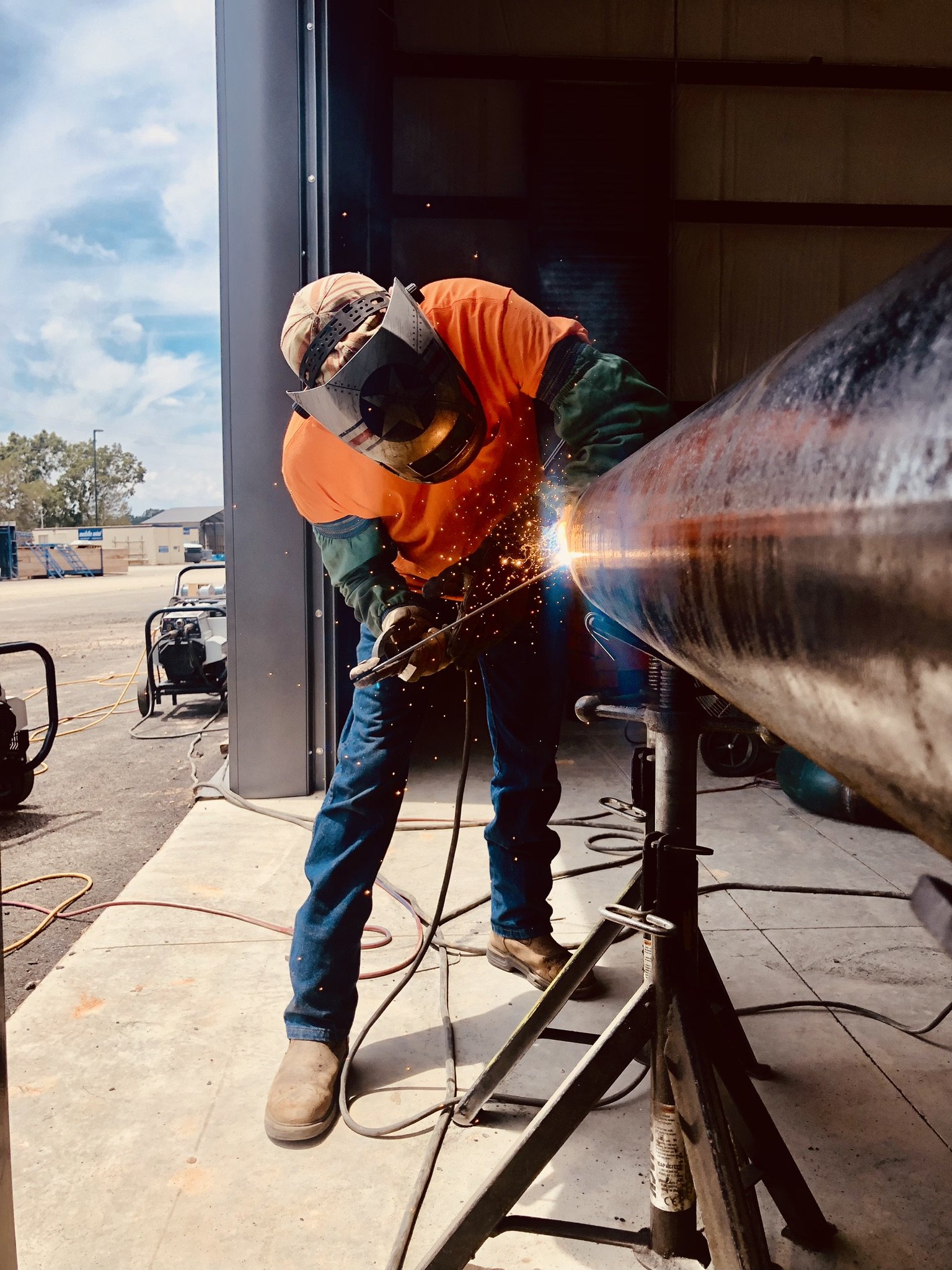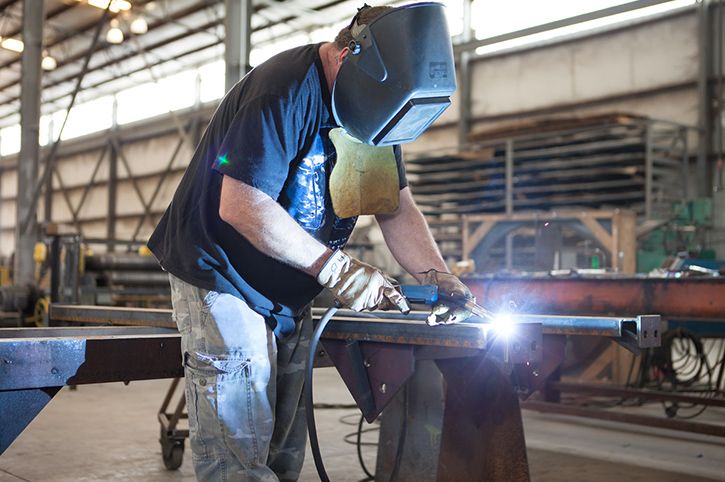Usual Welding Repair Service Issues and Exactly How to Address Them Efficiently
Welding repair work usually encounter a range of issues that can threaten the stability of the end product. Usual troubles include insufficient infiltration, porosity, and imbalance, to name a few. Each defect offers unique challenges that need details strategies for resolution. Understanding these issues is important for welders intending to boost their abilities and end results. This conversation will check out these common welding repair work concerns and efficient methods to address them.
Insufficient Penetration
Inadequate infiltration happens when the weld steel fails to completely fuse with the base material, resulting in weak joints and possible structural failings. This problem often comes from not enough warmth input, inaccurate electrode angle, or inappropriate welding rate. Welders may experience insufficient penetration as a result of a miscalculation of the essential criteria for a certain product density or kind. In addition, contamination on the base product's surface can impede reliable bonding, worsening the problem. To address inadequate penetration, welders must ensure ideal setups on their equipment and preserve a clean work surface. Routine inspection of welds is advised to determine any kind of deficiencies early, enabling timely corrections and the avoidance of jeopardized architectural integrity in bonded assemblies.
Porosity
Porosity is a common flaw in welded joints that manifests as little gas bubbles trapped within the weld metal. This issue can jeopardize the stability of the weld, causing lowered stamina and potential failure under tension. Fabrication. Porosity usually emerges from contamination, wetness, or inappropriate welding methods, which enable gases to get away into the molten weld swimming pool. To attend to porosity, welders should guarantee correct surface preparation, preserve a clean workplace, and use suitable welding criteria. Furthermore, selecting the appropriate filler product and securing gas can mitigate gas entrapment. Routine assessment and screening of welds can help recognize porosity early, assuring timely corrective activities are taken, thus maintaining the quality and reliability of the bonded framework
Misalignment
Misalignment in welding can develop from different factors, consisting of inappropriate setup and thermal expansion. Recognizing the origin is crucial for effective resolution. Several modification methods are available to straighten elements and assure architectural stability.
Sources of Misalignment
Welding imbalance commonly originates from a variety of underlying problems that can endanger architectural stability. One main reason is inappropriate fit-up of components prior to welding, which can lead to voids and irregular surfaces. Variants in thermal development during the welding process can additionally lead to distortion, particularly if the materials being signed up with have different coefficients of development. Additionally, poor securing and fixturing may fall short to hold components securely in position, leading to activity throughout welding. Badly conserved equipment, consisting of welding devices and devices, may introduce inconsistencies in the weld bead, further contributing to misalignment. Ultimately, operator mistake, coming from not enough training or experience, can likewise play a significant role in developing misaligned welds.
Modification Techniques Readily Available
Attending to misalignment successfully needs a mix of corrective strategies customized to the specific issues available. One typical method is the usage of jigs or components to hold elements in the appropriate setting during welding, making sure regular alignment. In addition, preheating the materials can help in reducing distortion and enhance fit-up. For considerable imbalance, mechanical adjustment strategies, such as using hydraulic jacks or clamps, can be used to remedy the position prior to welding. Post-weld heat therapy might likewise be needed to soothe tensions brought on by imbalance. Cautious evaluation and modification during the setup stage can protect against imbalance problems from ending up being considerable troubles, promoting a smoother welding procedure and boosting general architectural integrity.
Distortion
Distortion is an usual challenge in welding that can develop from various elements, consisting of unequal heating & cooling. Recognizing the root causes of distortion is vital for applying effective prevention methods. Addressing this issue not only enhances structural integrity but likewise boosts the total top quality of the weld.
Reasons for Distortion
When subjected to the intense warm of welding, products commonly undertake modifications that can result in distortion. This sensation mainly emerges from thermal development and contraction during the welding procedure. As the weld location heats up, the product broadens; upon cooling, it acquires, which can develop internal stress and anxieties. On top of that, irregular home heating throughout a work surface can aggravate these anxieties, leading to bending or flexing. The kind of product likewise plays a substantial role; steels with varying thermal conductivity Web Site and coefficients of expansion may react in a different way, leading to unforeseeable distortions. Poor joint design and insufficient fixturing can add to imbalance throughout welding, enhancing the probability of distortion. Understanding these causes is important for effective welding repair service and prevention methods.
Avoidance Techniques
Effective prevention methods for distortion during welding emphasis on regulating heat input and making sure appropriate joint style. Keeping a regular warmth input aids to minimize thermal development and tightening, which can bring about distortion. Using strategies such as pre-heating the workpiece can additionally reduce the temperature gradient, advertising consistent home heating. In addition, picking appropriate joint styles, such as T-joints or lap joints, can enhance stability and lower tension focus. Applying correct fixturing to protect the work surfaces in position additionally help in maintaining placement throughout the welding process. Staggered welding sequences can distribute heat much more equally, stopping local distortion. By using these techniques, welders can greatly lower the likelihood of distortion and boost the general high quality of their welds.
Splitting
Splitting is a typical problem run into in welding repairs, frequently resulting from different aspects such as improper air conditioning prices, material selection, or insufficient joint preparation. The incident of splits can substantially compromise the integrity of the weld, causing prospective failures throughout procedure. To address this issue, welders need to first examine the source, guaranteeing that products work and appropriately selected for the certain application. Additionally, regulating the air conditioning price throughout the welding procedure is vital; fast cooling can induce tension and result in fracturing. Proper joint style and prep work additionally add to reducing the danger. Carrying out these strategies can enhance weld quality and see this website toughness, inevitably lowering the likelihood of breaking in completed weldments.

Insufficient Blend
A substantial issue in welding repair work is insufficient combination, which happens when the weld steel does not properly bond with the base material or previous weld passes - Montana Mobile Welding and Repair Belgrade Fabrication. This defect can result in weaknesses in the joint, potentially compromising the honesty of the bonded structure. Variables adding to insufficient fusion consist of inadequate warmth input, improper welding method, and contamination of the surfaces being joined. To address this concern effectively, welders need to ensure proper pre-weld cleaning and surface area preparation, along with readjust their welding parameters to attain ample penetration and combination. Normal examination throughout the welding process can also assist recognize incomplete blend early, enabling for timely rehabilitative procedures to enhance the total quality of the weld
Overheating
While welding repair work can improve architectural honesty, overheating presents a significant difficulty that can result in product deterioration. Too much warmth throughout welding can change the mechanical buildings of metals, leading to reduced strength, raised brittleness, and bending. This sensation is specifically critical in high-stress applications where structural reliability is extremely important. Determining overheating can entail visual evaluations for discoloration or distortion, as well as keeping track of temperature during the welding process. To mitigate the threats connected with overheating, welders need to employ ideal methods, such as controlling heat input, readjusting travel rate, and making use of suitable filler products. In addition, carrying out pre- and post-weld warm treatments can help bring back material homes and boost the general top quality of the repair service, guaranteeing long-lasting efficiency and safety and security.
Frequently Asked Inquiries
What Are the Typical Indications of a Welding Flaw?

Just How Can I Evaluate My Welds for High quality?
To check welds for high quality, one can use aesthetic assessments, ultrasonic screening, and radiographic techniques. Each method ensures architectural stability, recognizes issues, and validates adherence to specified standards, eventually enhancing the integrity of the bonded joints.
What Security Safety Measures Should I Take While Welding?
When welding, one ought to prioritize safety by putting on ideal personal protective devices, making sure appropriate air flow, safeguarding combustible materials away, preserving a clean workspace, and being mindful of surroundings to stop injuries and mishaps.
Can I Fix a Weld Without Remodeling the Entire Joint?
Repairing a weld without remodeling the entire joint is possible, depending on the damages (Belgrade). Methods such as grinding, adding filler product, or utilizing a welding process can successfully resolve particular imperfections while maintaining the surrounding framework
What Equipment Are Important for Effective Welding Fixes?
Important tools for effective welding repair services include a welding equipment, cable brush, mill, safety equipment, clamps, and filler materials. Each tool plays an essential duty in making sure high quality and security throughout the repair work process. Porosity commonly emerges from contamination, dampness, or improper welding discover this strategies, which enable gases to run away right into the molten weld swimming pool. Inadequately conserved devices, including welding equipments and tools, might introduce inconsistencies in the weld bead, additional adding to misalignment. When subjected to the intense heat of welding, products commonly go through changes that can lead to distortion. Splitting is a common concern experienced in welding repair services, typically resulting from numerous aspects such as improper air conditioning rates, material option, or inadequate joint preparation. A considerable concern in welding repair work is incomplete combination, which takes place when the weld metal does not properly bond with the base material or previous weld passes.